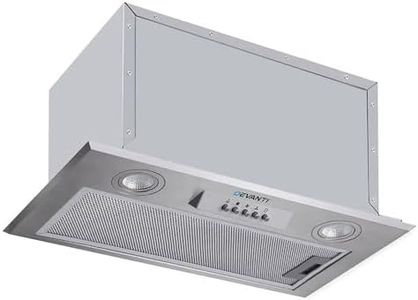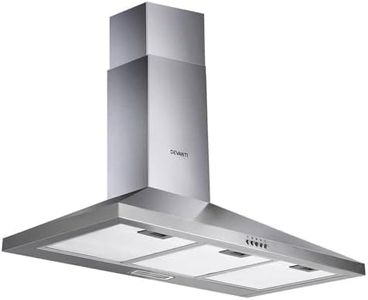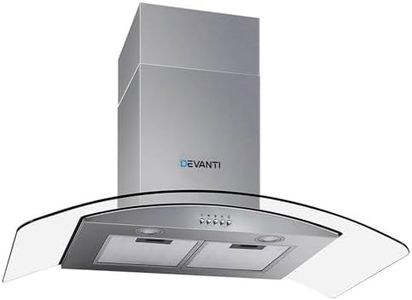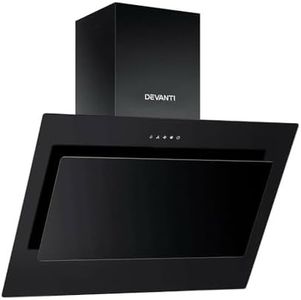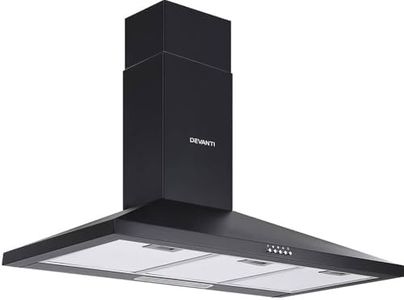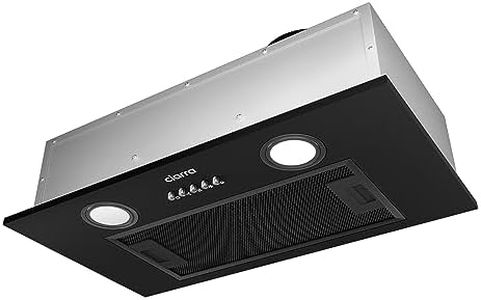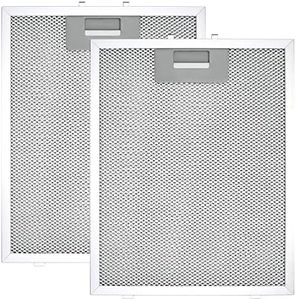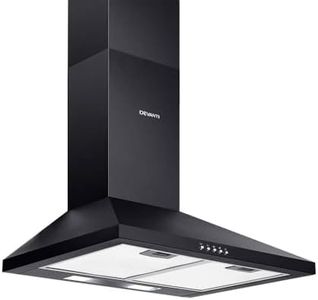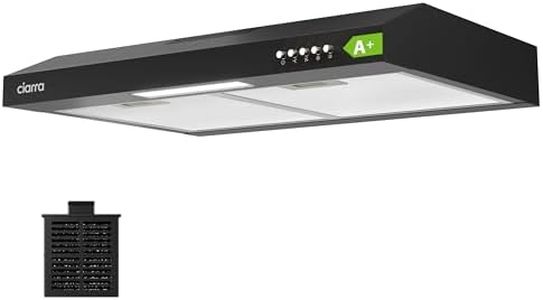We Use CookiesWe use cookies to enhance the security, performance,
functionality and for analytical and promotional activities. By continuing to browse this site you
are agreeing to our privacy policy
10 Best Range Hoods
From leading brands and best sellers available on the web.By clicking on a link to a third party's website, log data is shared with that third party.
Buying Guide for the Best Range Hoods
Choosing the right range hood is key for maintaining a clean, comfortable, and odor-free kitchen. The main role of a range hood is to remove smoke, steam, and airborne grease particles generated during cooking, improving air quality and kitchen cleanliness. There are different types and features available, so understanding your cooking habits, kitchen design, and space constraints will help you find the best fit.Airflow (CFM)Airflow is measured in cubic feet per minute (CFM) and it tells you how much air the hood can move. Higher CFM means the hood can remove more smoke and odors faster. Light cooking or small kitchens can work well with lower CFM (around 200-400), while heavy cooking with lots of frying or strong smells, or large kitchens, may benefit from hoods with higher CFM (over 400). Consider your stove’s size and your cooking style; frequent or heavy cooking usually needs more airflow.
Size and WidthThe size and width of the range hood should match or slightly exceed the size of your cooktop. The most important reason is to properly capture all the smoke and steam. Range hoods typically come in widths like 24”, 30”, or 36”. A hood the same size or a few inches wider than your stove provides the best coverage and effectiveness.
Ducted vs. DuctlessRange hoods can be either ducted or ductless. Ducted hoods vent air outside, which is most effective for removing heat and odors. Ductless hoods use filters to clean the air and recirculate it back. Ducted is a better choice if you often cook with lots of smoke or grease, while ductless might suit occasional cooks or those with no outdoor vent option. Think about your kitchen’s layout and if installing ductwork is possible.
Noise LevelNoise level is measured in sones or decibels and reflects how loud the hood will be when running. Lower numbers mean quieter operation. Some people are bothered by loud hoods, especially if your kitchen is part of an open living space. If noise matters to you, look for range hoods with lower noise ratings, especially at the fan speeds you’ll use most often.
Filtration SystemThe filtration system traps grease, smoke, and odors. Most hoods use metal mesh or baffle filters for grease, which can be washed and reused. Ductless hoods use additional charcoal filters for odors, which need replacing regularly. If ease of cleaning is important or you cook greasy foods often, look for washable filters. For odor control in ductless systems, check how often charcoal filters need to be replaced.
Control TypeControls can be basic push buttons, touch panels, or even remote controls. Simple controls are easy to use and reliable, while digital controls or remotes can offer more features. If you value simplicity and durability, traditional push-buttons or knobs might be enough. If you like convenience and extra functions, opt for more advanced control types.
LightingMost range hoods include built-in lighting to illuminate the cooktop. Lighting can be in the form of incandescent, halogen, or energy-saving LED lights. Good lighting can make cooking easier and safer. If you cook often or prefer bright light, pay attention to the brightness levels and placement of the lights in the hood.
